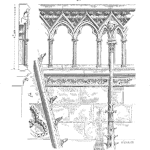
The last post moved into the role of quality and reliability engineers, and the influence that leadership in design and product development has on the product reliability process. Similarly, this post will move to Q & R managers, again looking at the role of that position in relation to product reliability.
What’s the role of a quality and reliability manager?
Like the Q & R engineer, the Q & R manager plays a role with a broad scope within the organization, providing advice, guidance, and feedback to the rest of the organization on the Q & R objectives. The scope may include developing strategy, facilitating interdepartmental cooperation, and providing oversight of a team of Q & R professionals. Q & R managers often work directly with customers to understand their requirements, needs, and objectives. They also work closely with suppliers to avoid or resolve supply chain impact on Q & R product performance. Whether with customers or suppliers the work may be proactively minimizing the adverse impact to Q & R or reacting to Q & R issues. Like the Q & R engineer, the Q & R manager’s most valuable service to the organization and customer is accomplished proactively.
Setting clear quality and reliability goals and developing systems to predict and monitor progress toward those goals is essential for a proactive role. Identifying risks, allocating resources, and promoting progress for the organization’s approach to quality and reliability product performance may involve changing the culture of the organization.
Using lessons learned
Consider the following example. After an expensive field failure episode, the Q & R manager was tasked with avoiding a similar product return situation in the future. He is given no budget and no personal and has a week to come up with a plan. The failure analysis of the current field failure cause revealed that the organization knew about the issue of a previous product development project. In this program, the product design team was unaware of the previous discovery and failed to avoid the problem.
So the Q & R manager created a short list of field failure lessons learned. For example, ceramic capacitors are like glass and their fracture reminded design teams to consider the fragility of these common components. The manager’s first list had 16 items highlighting previous major field failure events. He then visited each product design team program manager and asked what procedures needed to be implemented to avoid the 16 classes of failure causes. For each item on the list, the development team included a specific task, study, or test in the product development plan. This process raised awareness of the lessons learned.
The Q & R manager then returned to the product design team at the final design review, just prior to launch, and asked “What did you do to avoid each issue?” and ”Did your team actually proactively review and verify the risk?” If the team successfully remembered the potential risk to increased field failures, he would approve the design for production.
What were the results?
In five years, the list has grown to 20 items and they have successfully not repeated any of the previous design errors that lead to major field failure events. The process also created a culture in which product reliability was deemed important and worth the investment to achieve the Q & R goals, as it directly impacted the field failure rate and company profitability.
 Ask a question or send along a comment.
Please login to view and use the contact form.
Ask a question or send along a comment.
Please login to view and use the contact form.
Leave a Reply